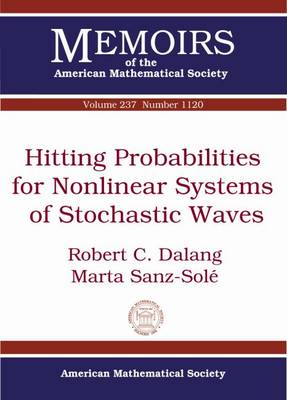Memoirs of the American Mathematical Society
1 total work
Hitting Probabilities for Nonlinear Systems of Stochastic Waves
by Robert C. Dalang and Marta Sanz-Sole
Published 1 September 2015
The authors consider a $d$-dimensional random field $u = \{u(t,x)\}$ that solves a non-linear system of stochastic wave equations in spatial dimensions $k \in \{1,2,3\}$, driven by a spatially homogeneous Gaussian noise that is white in time. They mainly consider the case where the spatial covariance is given by a Riesz kernel with exponent $\beta$. Using Malliavin calculus, they establish upper and lower bounds on the probabilities that the random field visits a deterministic subset of $\mathbb{R}^d$, in terms, respectively, of Hausdorff measure and Newtonian capacity of this set. The dimension that appears in the Hausdorff measure is close to optimal, and shows that when $d(2-\beta) > 2(k+1)$, points are polar for $u$. Conversely, in low dimensions $d$, points are not polar. There is, however, an interval in which the question of polarity of points remains open.
